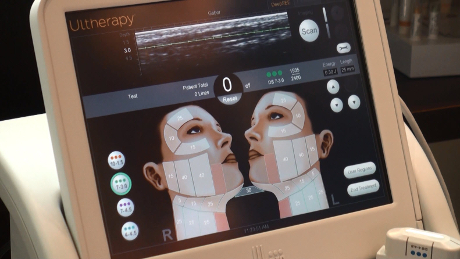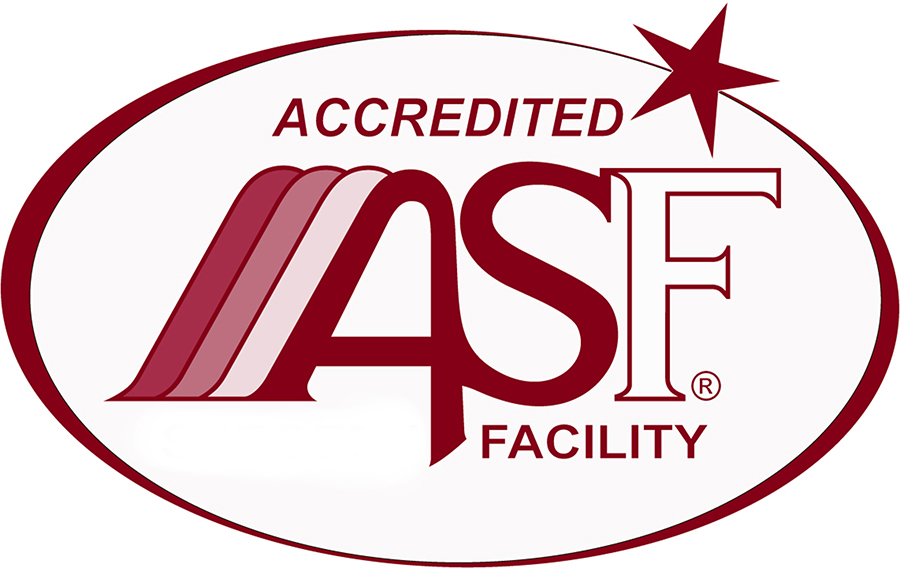ULTHERAPY®

What is Ultherapy?
How Does it Work?
During the procedure, microfocused ultrasound energy is directed deep below your skin’s surface to initiate your body’s natural repair process. This stimulates the production of resilient, new collagen for a natural looking lift.
Your results may improve over the course of three to six months, and your fresher look can last a year or longer. Responsiveness varies from patient to patient, depending on how much skin laxity they have and their body’s own biological response to the ultrasound and collagen-building process. Some patients may benefit from more than one treatment. Follow-up Ultherapy treatments each year may help maintain these results.


“When I reviewed respected surgeons’ work on the new Ulthera, I was excited. So I had Ulthera perform the procedure on myself and I’ve been pleasantly surprised with the skin tightening results I achieved. We purchased Ulthera to make available a quick and easy face tightener to people in Utah. So many patients tell me they want even modest results with no down time or invasive surgery. This is the best option I have seen so far as it tightens at two levels. The skin and the deeper fascia/muscle layer that is tightened during a facelift.”
– Dr. Scott Haupt, MD, Board Certified Plastic Surgeon

What is Ultherapy?
Ultherapy is a safe, non-surgical ultrasound treatment that counteracts the effects of time and gravity on your skin. Ultherapy uses the body’s own regenerative response to gently and gradually lift skin on the eyebrow, under the chin and on the neck, and smooth lines and wrinkles on the décolletage.
What is unique about Ultherapy?
Ultherapy is the only non-invasive treatment cleared by the FDA to actually lift skin. Ultherapy is also the only cosmetic procedure to use ultrasound imaging, which allows practitioners to see the layers of tissue targeted during the treatment to ensure the energy is deposited to where it will be most beneficial.
With the addition of the new Ultherapy® Décolletage Treatment, Ultherapy is also now the only non-invasive procedure specifically indicated by the FDA to improve lines and wrinkles on the chest.
Can Ultherapy replace a facelift?
Ultherapy treats the deep foundational layer addressed in cosmetic surgery, but won’t duplicate the results of a facelift. Ultherapy is a great alternative, however, especially for the not ready for surgery or for patients looking to extend the effect of cosmetic surgery.
How does Ultherapy differ from laser treatments?
Ultherapy uses sounds energy – tried-and-true ultrasound – which has unique properties that allow it to bypass the surface of the skin to treat depths not matched by any other non-invasive cosmetic device. Ultherapy ultrasound stimulates collagen production in the skin’s foundation, resulting in a clinically significant lift of tissue over 2-3 months.
Laser rely on light energy, which cannot reach deeper skin layers at an optimal temperature, so laser treatments typically on treat superficial skin and are not FDA-cleared to lift skin. Since the two technologies often treat different types of skin issues, they’re actually very compatible.
How does Ultherapy stimulate the creation of collagen?
Ultherapy deposits focused ultrasound energy deep beneath the skin at the optimal temperature for collagen regeneration. The treatment jumpstarts a natural process, known as neocollagenesis, to produce fresh, new collagen. Ultherapy doesn’t involve any creams, fillers or toxins; it just relies on your body’s own collagen-building process for natural, noticeable results.
How long does an Ultherapy treatment take?
The length of the treatment will depend on the area being treated and you individual treatment plan. A face and neck procedure typically takes 90-120 minutes, while a chest treatment takes approximately 30 minutes.
Will I need to take time off?
With Ultherapy, there is no downtime. After your procedure, you can resume your normal activities immediately, without having to follow any special post-treatment measures.
What does the Ultherapy treatment feel like?
As the ultrasound energy is delivered, you will feel tiny amounts of energy being deposited to precise depths, indicating that the collagen-building process has been initiated. Comfort levels vary from person to person, but the sensation only last while the ultrasound energy is being delivered.
When will I see results? How long do they last?
After your Ultherapy treatment, you may see some initial effect, but the ultimate results will take place over 2-3 months, as your body naturally regenerates collagen. Since the procedure stimulates you own collagen production, how long the results last really depends on you. The treatment produces new collagen on the inside, but your natural aging process will dictate how long that translates into visible results on the outside.
How many Ultherapy treatments will I need?
Most patients only need one treatment. However, based on the degree of skin laxity, the biological response to ultrasound energy and the individual’s collagen-building process, some patients benefit form additional treatments. Because skin continues to age, future touch-up treatments can help patients keep pace with the body’s natural aging process.
Are there any side effects?
The skin might appear flushed at first, but the redness should disappear within a few hours. Some patients experience slight swelling, tingling or tenderness to the touch, but these are temporary in nature. Other, less common post-procedural effect may include temporary bruising or numbness on small areas of skin. As with any medical procedure, there is the possibility for other rare effects, which your practitioner will review with you. For full product and safety information, visit ultherapy.com/IFU.
Is Ultherapy safe?
The FDA-cleared Ultherapy® procedure has been used safely in over 350,000 treatments worldwide. Ultrasound energy has been used safely in the medical field for more than 50 years. In addition, every Ultherapy practitioner receives extensive procedural training.
How much does an Ultherapy procedure cost?
The cost of Ultherapy can range, depending upon the area being treated and factors such as geographic location and individual physician practices. Since the treatment is so personalized to get the most accurate price quote, it is best to speak with a nearby provider.
Who is a good candidate for Ultherapy?
A good Ultherapy candidate has mild to moderate skin laxity where the skin begins to feel and look less firm. Examples include a lowered eyebrow line, loose skin on the neck, sagging under the chin, and lines or wrinkles on the chest. Of course, the best way to find out if you’re an Ultherapy candidate is to consult with a practitioner.
Interested In Seeing Results From Our Clients?
View Our Gallery to See Before and After Results.
OUR ASSOCIATIONS






